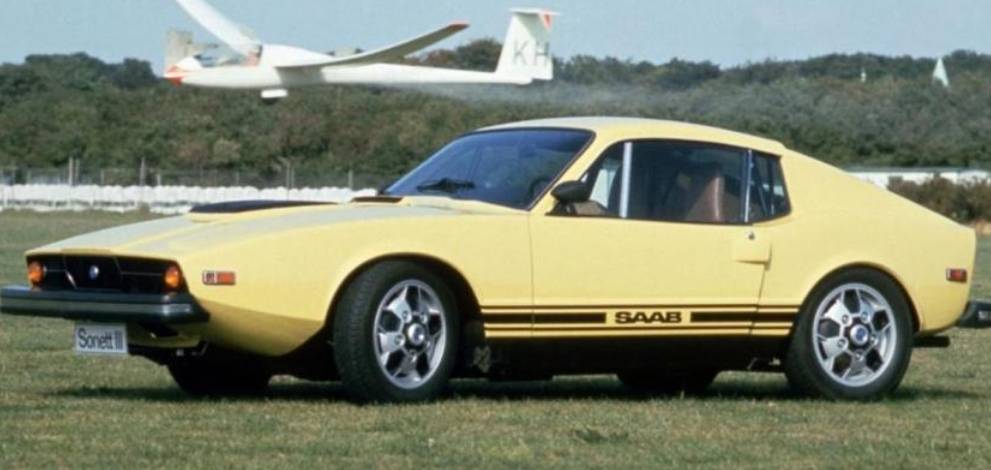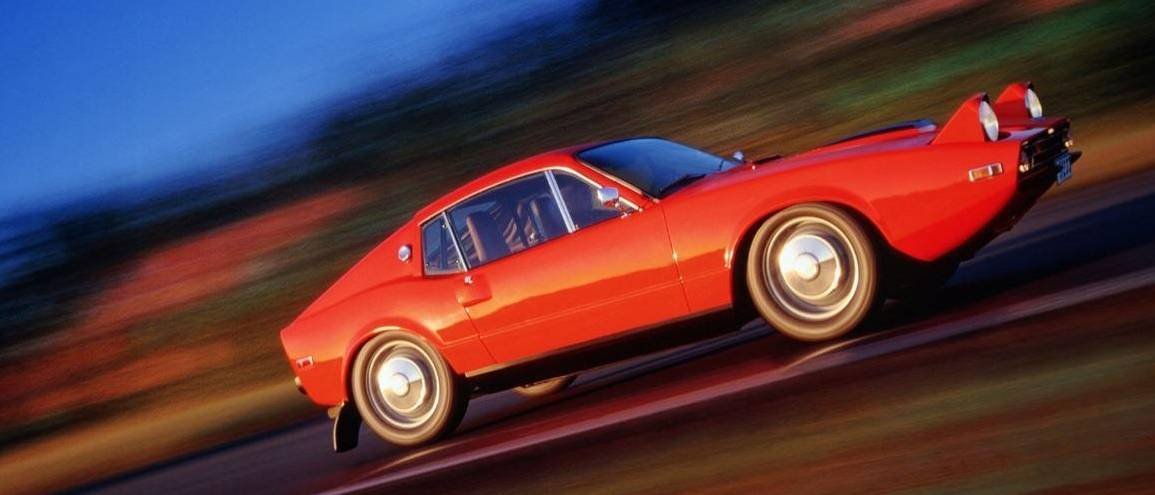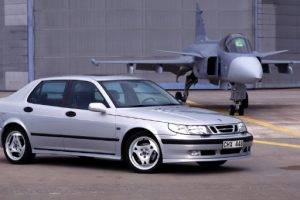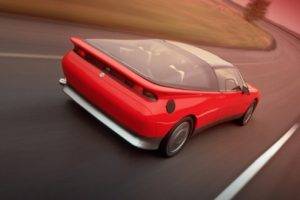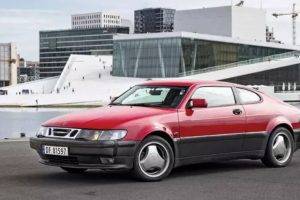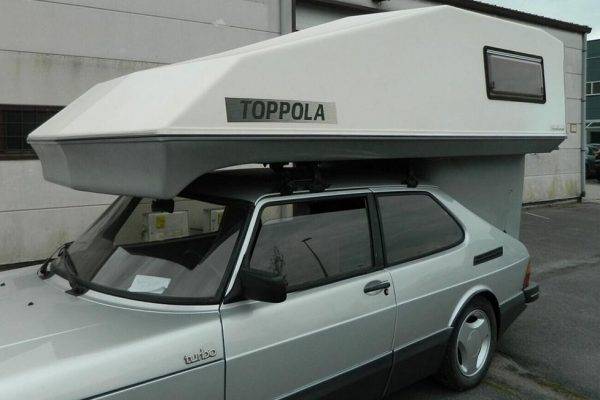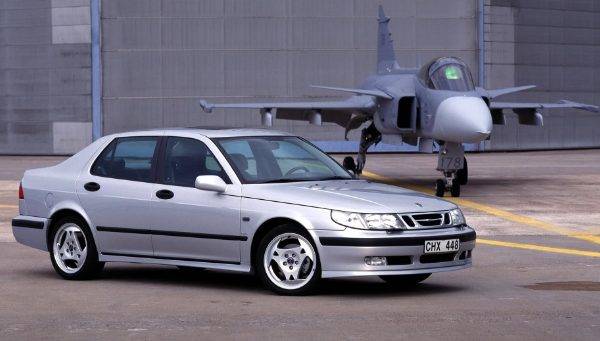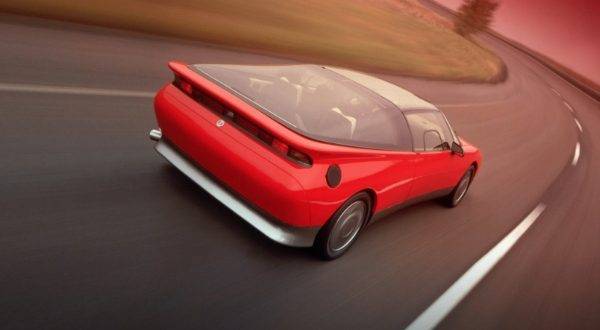A small two-stroke sports car designed for the American market? It couldn’t work.
The history of Saab Sonett began in the mid-1950s, when the first Sonett saw the light of day, with the factory code Saab 94. It was a small roadster, with a two-stroke engine, low windshield and sharp creases on the hood and rear section. Thanks to the plastic body, the car weighed only 600 kg, and it was powered by a three-cylinder 56 hp engine, derived from the Saab GT750, the sports version of the 93 model.
Serial production of the first Sonetta was never started – only six prototype units were built. Saab wanted to use it for racing, but when the GT regulations were changed, the project had no chance of success.
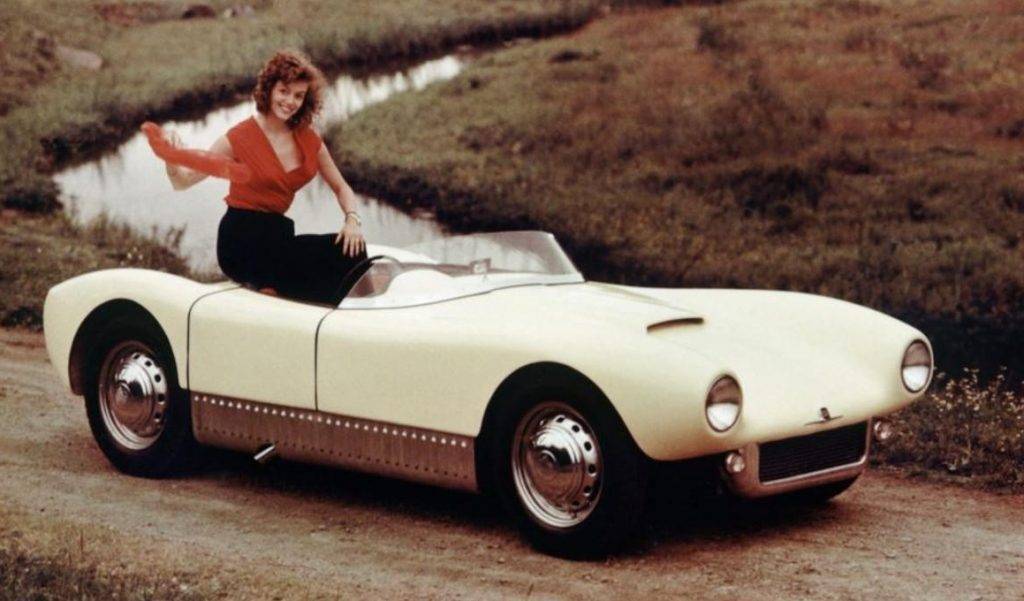
SAAB SONETT II
The Trolhattan brand returned to the idea of a small sports car in the second half of the 1960s. At that time, two prototypes that competed with each other were created. Malmo Flygindustri, a small aircraft manufacturing company, was responsible for the first. In 1965, the company unveiled a prototype of the second generation Saab Sonnet, called the MFI-13.
He competed with another, called Catherina, for which Sixten Sason, one of Saab’s designers, was responsible. Looking at its visualization, it is impossible not to find a connection with Alfa Romeo, especially when it comes to the design of a small grill. Saab eventually decided to base the final version on the first prototype, and production started in 1966.
In line with the prototype designers’ assumption, the Sonett remained a small – only 3.8 meters – sports car with a plastic body. The car had small front and rear overhangs, it was compact and precise. The position behind the wheel corresponded to the sporty character – it was low and quite hard. Despite not very strong engine, the car gave a great driving experience.
In line with Saab’s philosophy, safety was taken care of – the car had a tubular cage protecting the passenger compartment. Noteworthy is the fabulous access to the engine and front suspension. The body, up to the bulkhead, was raised to an angle of 90 degrees, thanks to which all mechanical activities could be conveniently performed.
The first batch of Sonetta II was produced in the years 1966-1967. At that time, 258 units were built, which were equipped with a two-stroke 841 cm3 engine with a capacity of 61 HP, which allowed to reach 150 km / h and accelerate this small car to 100 km / h in 12.5 seconds. Already in 1967, a decision was made to change the power unit. It was caused, inter alia, by stricter exhaust gas regulations in the USA. The two-stroke Saab did not meet the new regulations, and the US market was the most important for the Sonett model.
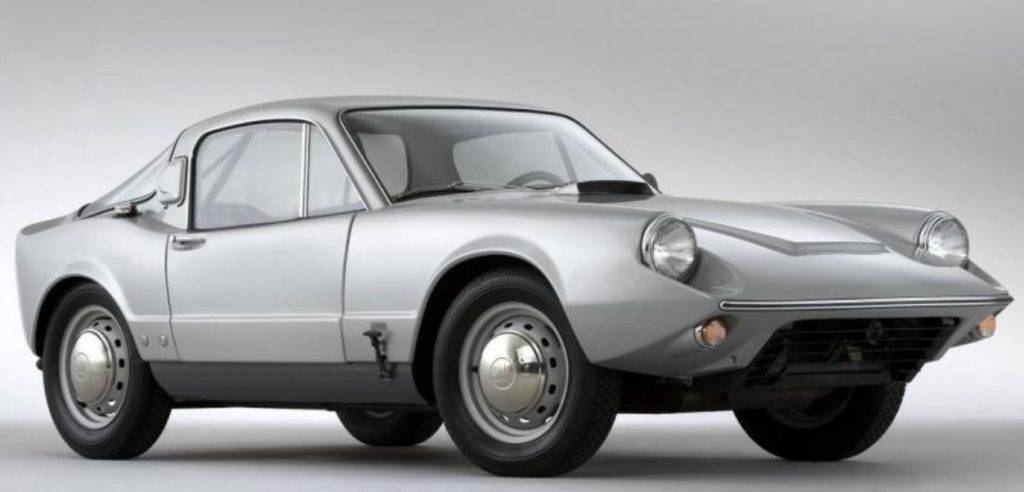
SAAB SONETT V4
This is how the Saab Sonett V4 was born. In place of the two-stroke, a four-stroke V4 unit from the Ford Taunus was installed, which produced 68 hp from a capacity of less than 1.5 liters. The car gained a bit in the maximum speed – it could accelerate to 160 km / h, but its dynamics did not improve significantly, among others. by 35 kg higher curb weight.
Changing the power unit required a stylistic modification – creating an air intake on the hood, which was marked with the inscription “Sonett V4”.
1,610 such cars were produced. These were trace amounts when looking at the brand’s capabilities. In 1967, 45,325 cars were produced, of which Sonett – 455 (two-stroke cars, and in the second half of the year – V4).
Virtually the only export market for Sonett was the US, where it was expensive and considered quite strange. His task was not to generate large profits for the company, but to improve the brand image. It is enough to say that the price of the second generation oscillated around $ 3200-3800, while the base price of the Dodge Charger was around $ 3100. This made it a niche product from faraway Sweden, rather than a real competition for sports cars sold in the US.
The new generation of Sonettas appeared very quickly, because already in 1970 a new model was introduced into production, which was technically identical to its predecessor. It was one of the objectives that Sergio Coggioli, the Italian stylist responsible for the new Saab sports body, had to deal with. Longtime Saab employee Gunnar A. Sjogren also contributed to the project.
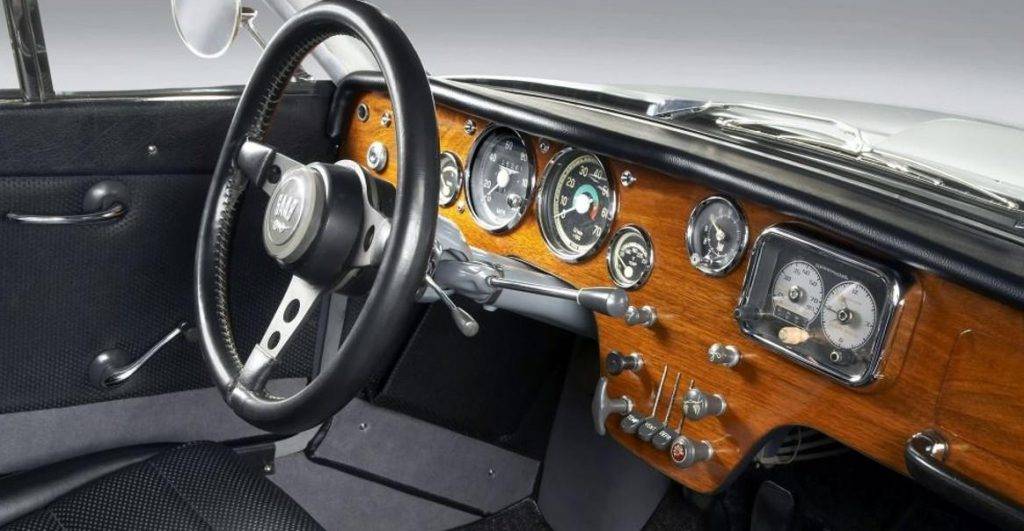
THIRD GENERATION
The new body had to fit into the floor plate of the old model. The car, despite having the same wheelbase, was longer – it already measured 3.9 meters, which made its proportions more natural. The design of the side line shows the Italian lightness that the previous generation lacked.
The basic change of the 3rd generation Sonett was a new front apron, devoid of protruding, round headlights, matching the fifties and sixties. This time, they used fashionable – until the end of the 1980s – retractable lamps.
The big advantage was the solution to the trunk issue. In the second generation model, access to the luggage space was possible thanks to a small door. In the case of the new body, it was possible to design a sensible solution with a raised rear window, which significantly increased the comfort of use. For the sake of balance, access to the engine deteriorated significantly. Instead of the entire front being lifted, the moving part of the hood was only a small, central element.
The new Saab Sonett, despite the use of an identical driveline, with a Ford V4 engine, front-wheel drive and a four-speed gearbox (this time mounted between the seats, not in the steering column), has been better received on the market. In the years 1970-1974, 8368 units were produced. In 1972 Sonett received a stylistic modernization – the front grille was changed.
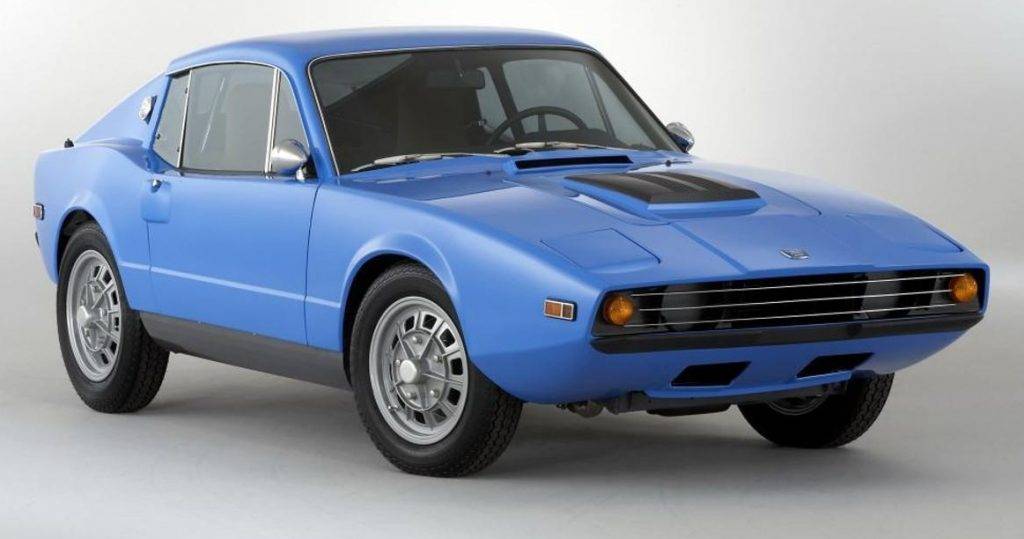
THE END OF PRODUCTION
Production ended in the fall of 1974. It was related to the oil crisis and new regulations regarding safety and exhaust emissions in the USA. Adapting to them would require a major overhaul, and Saab was unable to enjoy the sales performance of its coupe. Last year, 1,596 units left the plant in Arlov, and the new family model 99 was produced in the amount of over 28,000. pieces.
Although Saab Sonett went mainly to the USA, the brand’s enthusiasts brought some cars to the Old Continent, including using the European Delivery program, thanks to which it was possible to order a car in an American showroom and pick it up at a European dealer. A small part of the production was also sold on the Swedish market.
It is possible to find a used copy, but you have to take into account the amounts of 30,000. euro for Sonetta II. The third generation will be cheaper – about 20 thousand. euro.
The story of this amazing project ended there. In total, just over 10 thousand. copies of the Sonettas and there is no chance of increasing this number. At least for now. Just before its demise, Saab was preparing a concept vehicle, referring to the model, but it was far from the production version.
